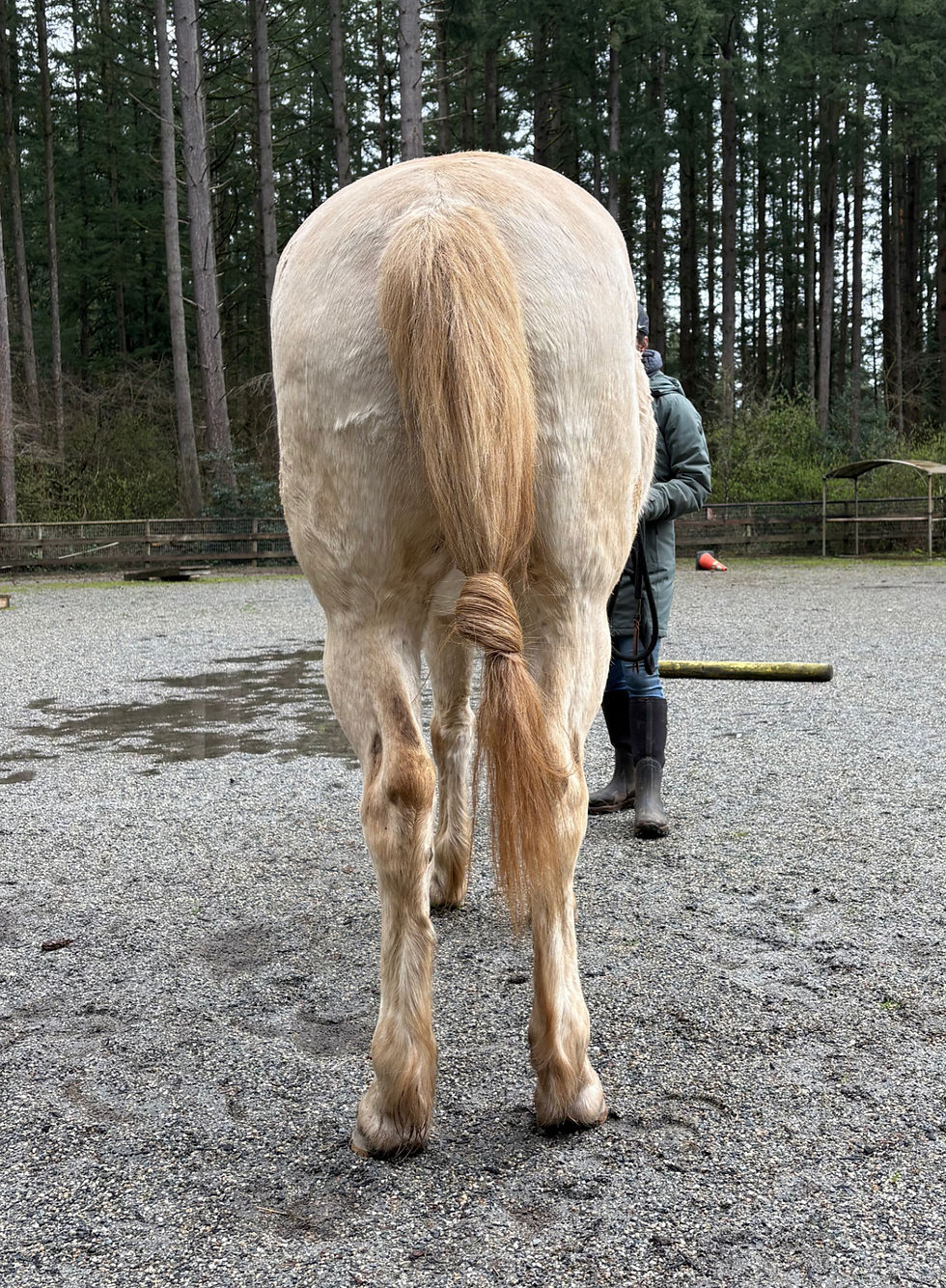When a Horse’s Needs Aren’t Met, No Therapy in the World Will Work
- Elisse Miki

- Aug 14
- 4 min read

"You can’t fix the symptom if the cause is built into the horse’s daily life."
Over the years, I’ve been called out to see hundreds of horses with every kind of orthopedic issue you can imagine: back pain, kissing spine, sacroiliac dysfunction, chronic lameness, you name it. And while these conditions are very real, there’s a deeper pattern that keeps emerging.
More often than not, the primary “problem” isn’t just the pathology in front of me — it’s the horse’s life.
The Unmet Needs That Undermine Everything
I regularly meet horses who:
Live in small enclosures with little to no turnout.
Work 6–7 days a week in repetitive training patterns with no variation.
Eat on a timed feeding schedule instead of having forage available as nature intended.
Wear restrictive training devices that limit the natural biomechanics of their joints.
Stand in shoes 24/7 without a break.
Live with severely imbalanced hooves that throw the entire limb and spine out of alignment.
Lack social contact with other horses.
Show every sign of stress, flatness, and quiet resignation.
And yet… I’m called out to “fix” them.
The truth is, I can do a lot for the horse’s comfort in the short term. But without addressing these foundational needs — the very things that define a horse’s biology and psychology — my work is like building a house on sand.
Why the “Symptom” Isn’t the Real Problem
We lose a lot of clients because many people aren’t ready—or willing—to face the truth about what a horse actually is. A horse is not a piece of sporting equipment. It’s not a machine you can push harder when it breaks.
A horse is a prey animal with specific physical, neurological, and emotional needs that must be met if you want true soundness.
Here’s the science behind some of the most common issues I see:
Ulcers
Ulcers can hold the back in a state of extension. You can mobilize that spine all day, but if the underlying acid build-up from lack of forage isn’t resolved, the horse will remain locked. Medication can help temporarily—but if you don’t fix the cause, the problem will return.
Worm Burdens
Worm infestations can create similar postural restrictions. They alter digestion, create discomfort, and affect the horse’s willingness to move and use their body normally.
Kissing Spine
Kissing spine doesn’t appear overnight. It is a slow-burn, progressive pathology that develops over years, usually due to how the horse is ridden, conditioned, and managed. Keep doing the same thing that caused it, and it will progress—no matter how many therapies you try.
Hoof Imbalance
Hoof imbalance changes everything. It alters limb loading, affects the way forces travel through the skeleton, and impacts spinal alignment. No spinal rehabilitation will “hold” if the horse is standing on distorted feet. This is the responsibility of the owner and trimmer/farrier to understand and correct.
Heavy on the Forehand / “Giraffe Neck” Posture
This is not a personality trait—it’s a compensatory movement strategy developed in response to pain, fear, or poor training. In short bursts, it’s not harmful. But if you ask a horse to perform athletic tasks in this frame—day after day—the spine will eventually fail.
The Global Picture
I hear it from my international students every week: the assessment videos, joint range-of-motion results, and case photos they send me are identical to what I see at home.
The same patterns. The same unmet needs. The same preventable breakdowns in the body.
Therapists everywhere are exhausted—not because we don’t love our work, but because we keep getting called in to patch up problems that could have been avoided if the horse’s life was aligned with its biology.
This is Not a Shame Post
It’s important to say: this isn’t about shaming or guilting anyone. Most people truly don’t know how deeply lifestyle affects soundness.
This is about waking up to the fact that healing doesn’t happen in isolation.
If your horse’s basic needs are not met—free movement, forage, companionship, safe training, correct hoof balance—any therapy will only ever go so far.
A Call to Action
If you’re willing to learn, adapt, and meet your horse’s needs, I can help you. I can bring all my skills, knowledge, and experience to your horse’s care. We can make meaningful, lasting change.
If you aren’t willing to make changes, then we’re at an impasse. I won’t waste your money or my energy putting a band-aid over a wound that’s being kept open by factors outside the body.
Your horse’s body tells a story. If you listen closely, it will tell you what it needs—not just for today’s ride, but for the rest of its life.
If your horse’s needs aren’t met, no therapy in the world will work. But if you give them what they need, the body—and the spirit—can heal in ways you might not believe are possible.
Ready to start the species-specific way? Book an Equine Orthopedic Assessment and let’s make a plan that actually works—because it’s built around your horse’s biology.







Comments